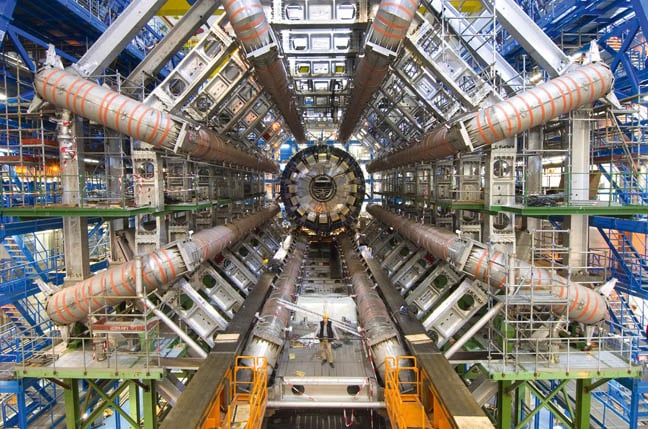Just like Isaac Newton, Galileo and Albert Einstein, I’m not sure exactly when I became aware of Peter Higgs. He has been one of those names that anyone who has even the slightest interest in science, especially physics, has become aware of at some point. Professor Higgs was catapulted to fame by the concept of the Higgs Boson – or God Particle as it became known. Sadly, this shy yet key player in the world of physics passed away earlier this month.
Peter Higgs was born on 29th May 1929 in Newcastle upon Tyne. He suffered with asthma as a child and, coupled with the family moving around due to his father’s work, was schooled at home for much of his earlier years. Whilst living in Bristol, Higgs’ father had to move to Bedford so Peter and is Mum stayed behind. Eventually he enrolled in Cotham Grammar School in Bristol where he excelled at science and won many prizes for his work. Surprisingly this tended to focus around chemistry rather than physics. It was at Cotham that he became fascinated by quantum mechanics.
By the time he was 17, he had moved to City of London School and here he focussed on mathematics, eventually graduating with a first-class honours degree in physics. His masters came two years later in 1952. In 1954, he was awarded a PhD with a thesis titled ‘Some Problems in the Theory of Molecular Vibrations from the Universe.’ Higgs tried to get a job at Kings College where he earned his PhD but was unsuccessful so moved to the University of Edinburgh and set about answering the question – Why do some particles have mass?
He worked upon the idea that, at the time when the Universe began, particles did not have mass. This was later gained due to interactions with something which became known as the Higgs Field. The concept was a field that permeates through space giving mass to sub-atomic particles like quarks and leptons. His work was an evolution of earlier work from Yoichiro Nambu from the University of Chicago.
Two other groups of scientists published work at similar times with a similar concept, but Higgs’ work published in 1964 was prominent and so the (theoretical) particle, that transferred mass, became known as the Higgs Boson. In the years that followed, scientists hunted for the new particle, chiefly using the Large Hadron Collider at CERN but Higgs retired by 2006 with nothing detected.
The Hadron Collider is a particle accelerator that had been built to simulate conditions equivalent to billionths of a second after the Big Bang. By crashing subatomic particles together and observing the interactions, scientists can probe the very nature of matter. It cost $10bn and it was this that scientists hoped would prove, or otherwise Higgs’ theory.
In 2012, Higgs received word from CERN at the collider ‘Peter should come to the CERN event or he will regret it!’ Higgs went along and to his delight and amazement, and at the age of 83 and 48 years after he published his theory, he heard that the Higgs Boson had finally been discovered. Higgs later said “It’s been a long wait but it might have been even longer, I might not have been still around. At the beginning I had no idea whether a discovery would be made in my lifetime.”
The discovery changed the face of physics and it was this that led to being awarded a Nobel Prize. Higgs didn’t own a mobile phone though and he found out about his award when a neighbour stopped him in the street to congratulate him. It is clear though that Higgs was in it for the science and not the fame that came with his groundbreaking discovery. He was a man who was often referred to as shy and retiring and he will be a great loss to the world of Physics. Professor Higgs died on 8th April 2021.

